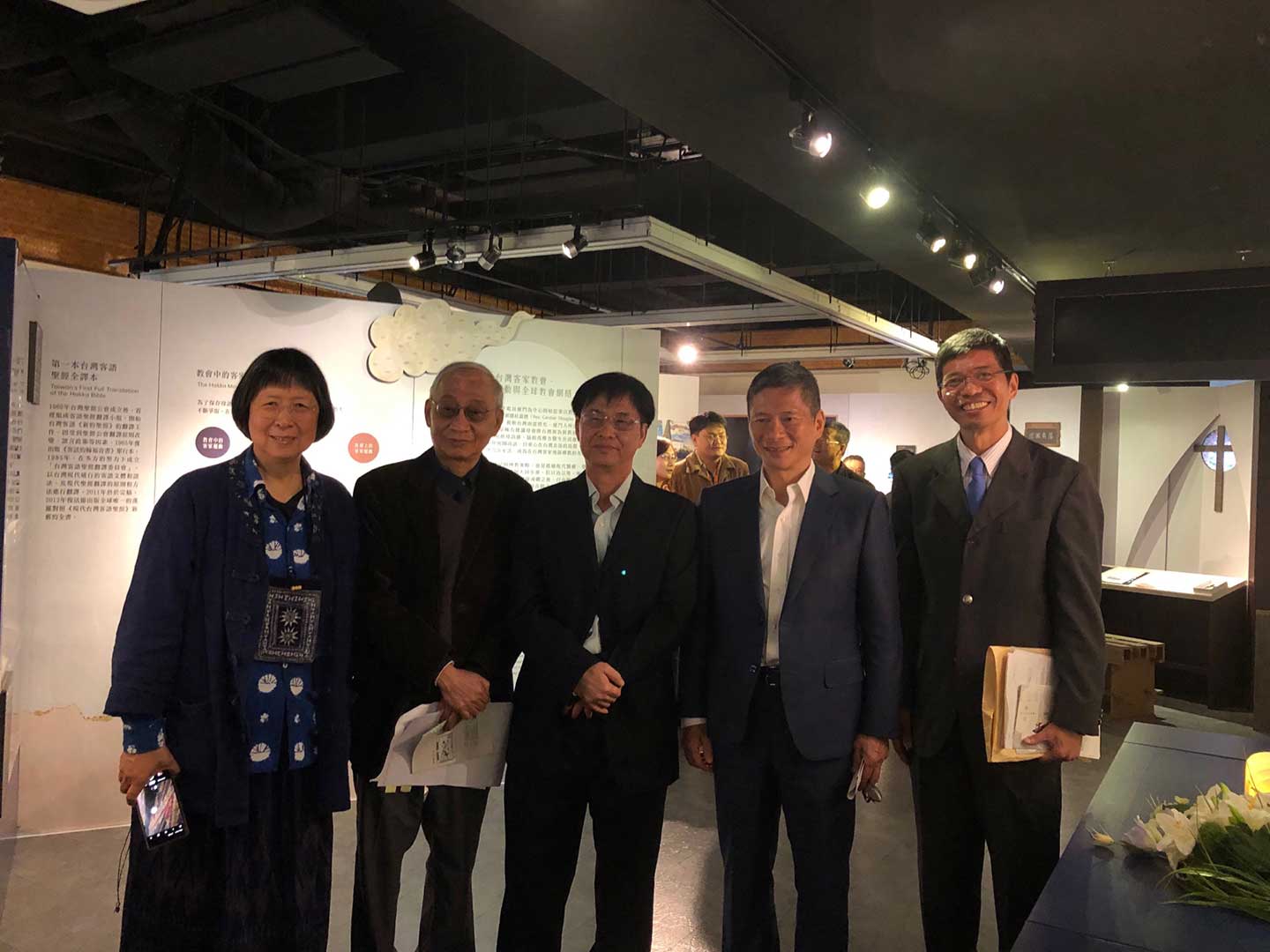
News
【Announcement】The exhibition "The Hakka Culture That You May Not Know" was held in Academia Sinica, in which will discribe how Hakka and Christianity met each other.
- Source:客家文化發展中心
- Publication Date:2019/03/27
- Last updated:2020/10/15
- Count Views:1383
Li Yongde, the chairman of the Hakka Affairs Council, went to the Institute of Ethnology in Academia Sinica this morning (March 27) to attend a press conference on the special exhibition "The Hakka Culture That You May Not Know – the Encounter between Hakkas and Christianity”. Chairman Li told about the research that he has ever done, in which he indicated that in fact, the Christian church has played an influential pusher in the Pinyin of Hakka, the formation of the concept of ethnic groups and the inheritance of Hakka languages, so that he hoped to enable more people to know more about Hakka culture from different angles through this special exhibition.
In his speech, Chairman Li first expressed his sincere gratitude to the Vice President of the Academia Sinica, Dr. Huang Chin-shing, the Director of the Institute of Ethnology, Dr. Hu Tai-li, and the research fellow, Dr. Huang Shiun-wey who completed the curation, and two consultants for this special exhibition, the Professor of National Chiao Tung University, Chang Wei-an and the Professor of National Central University, Chang Hanbi. At the same time, he thanked Professor Hsu Cheng-kuang and Professor Michael Hsiao for coming, who have been cultivating and founding the Hakka Affairs Council and caring for Hakka for many years.
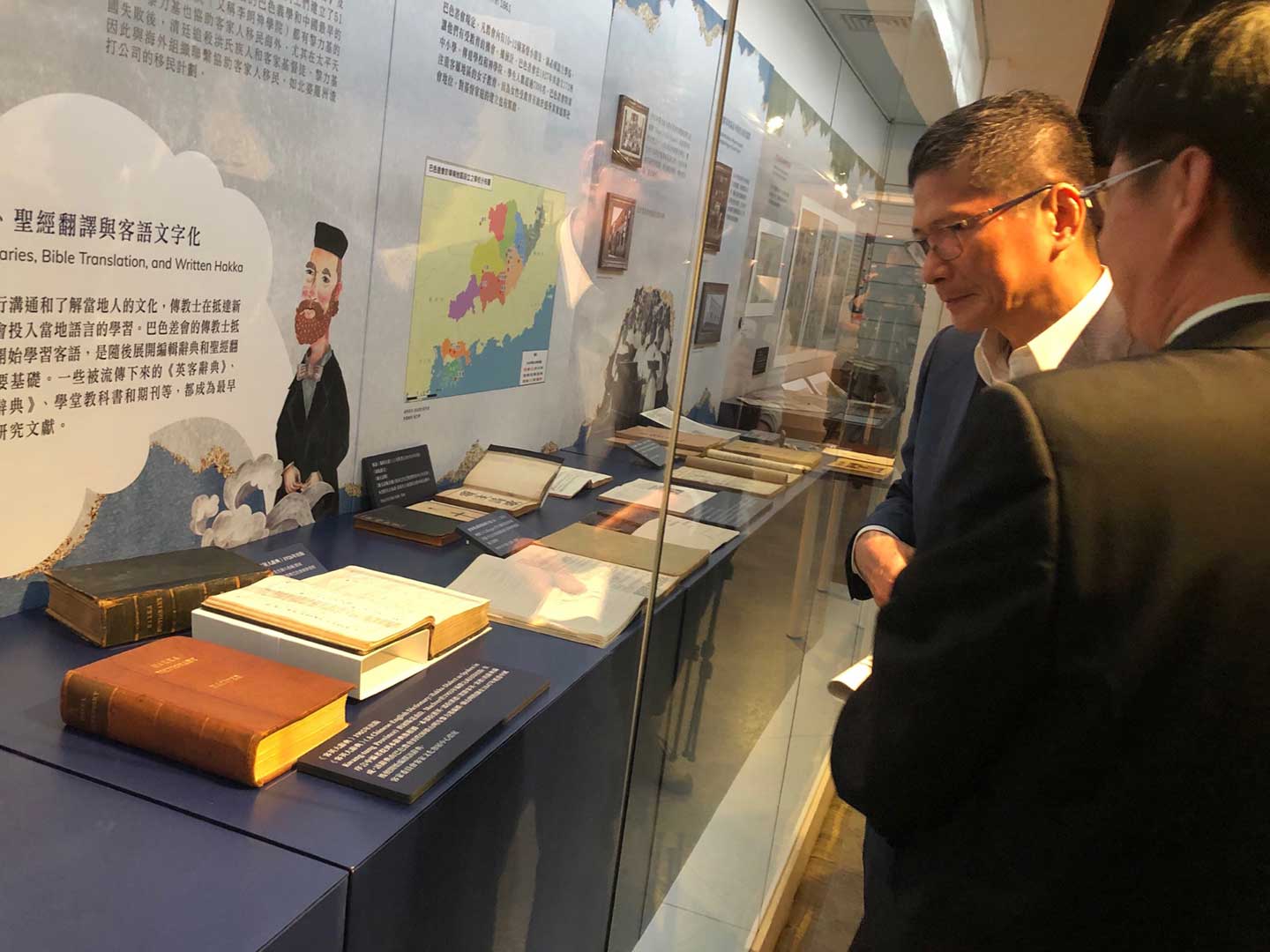
At the moment when so many scholars and experts gathered together, Chairman Li recalled that when he left the public television and just took charge of the deputy chairman of the Hakka Affairs Council in 2004, he started with a lot of research books nervous but carefully about these two simplest questions, “What is Hakka culture?" and "What are Hakka people?". He later discovered that when the pastor was preaching in the Hakka area, they tried to record the Hakka language with phonetic alphabets or symbols, such as HAKKA. At the same time, they also described the concept of the Hakka ethnic group they thought, and this caused the follow-up discussion by Lo Hsiang-lin and others, which was about where the Hakka came from. Recently, there are also many young pastors in Taiwan who are often preaching in Hakka. Based on his own role as the chairman of Hakka Affairs Council, he expressed his affirmation here and hoped that more people could see Hakka from this angle.
The special exhibition "The Hakka Culture That You May Not Know – the Encounter between Hakkas and Christianity” co-organized by the Taiwan Hakka Culture Development Center of the Hakka Affairs Council and the Academia Sinica will be held at the Museum of Institute of Ethnology until May of 2020. After that, the exhibition will be expanded with some research results from some Taiwan Hakka churches and then moved to the "Taiwan Hakka Museum" in Miaoli for another year.
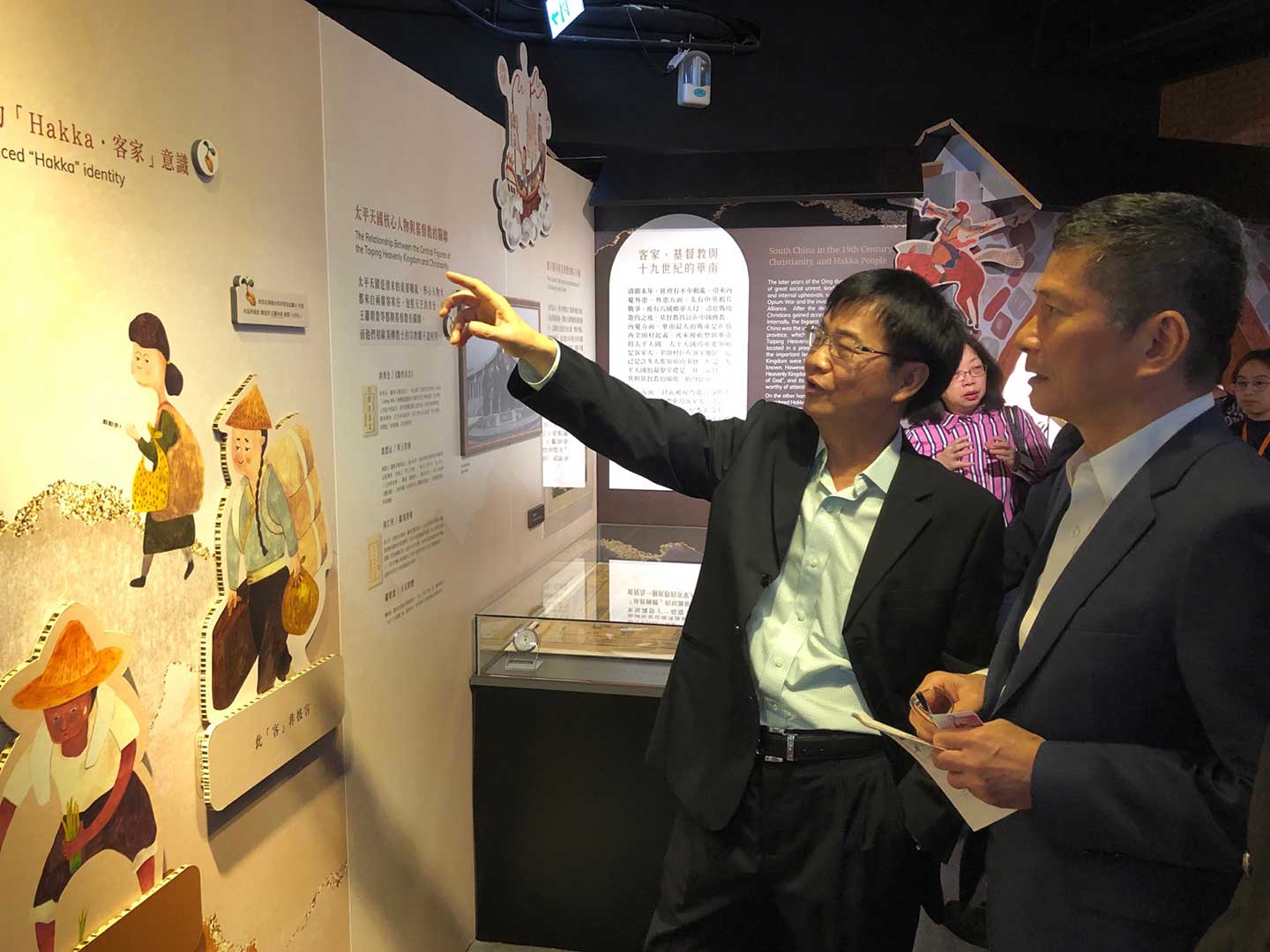
In this exhibition, many classic guest scriptures, old photographs of the Basel Mission, and cultural relics such as missionary propaganda will be exhibited. Among them, the most special is the dictionary A Chinese-English Dictionary, Hakka-Dialect published in 1905. The Basel Mission from the Switzerland didn’t only establish schools and medical institutions in the local area. In order to make the communication easier, the missionaries also learned Hakka dialects so that they compiled the dictionary A Chinese-English Dictionary, Hakka-Dialect, which was the best evidence that missionaries characterized Hakka language and learned Hakka, and also the earliest Hakka research literature. This version of A Chinese-English Dictionary, Hakka-Dialect has been out of print, and the Cornell University Library also listed it as a rare book. Through the introduction of Professor Peng Chin-ching, Hakka Affairs Council previously has bought a copy of the original paper book in 2011 and handed it over to the Taiwan Hakka Culture Development Center (Taiwan Hakka Museum) for collections, and this time it will be also be displayed.
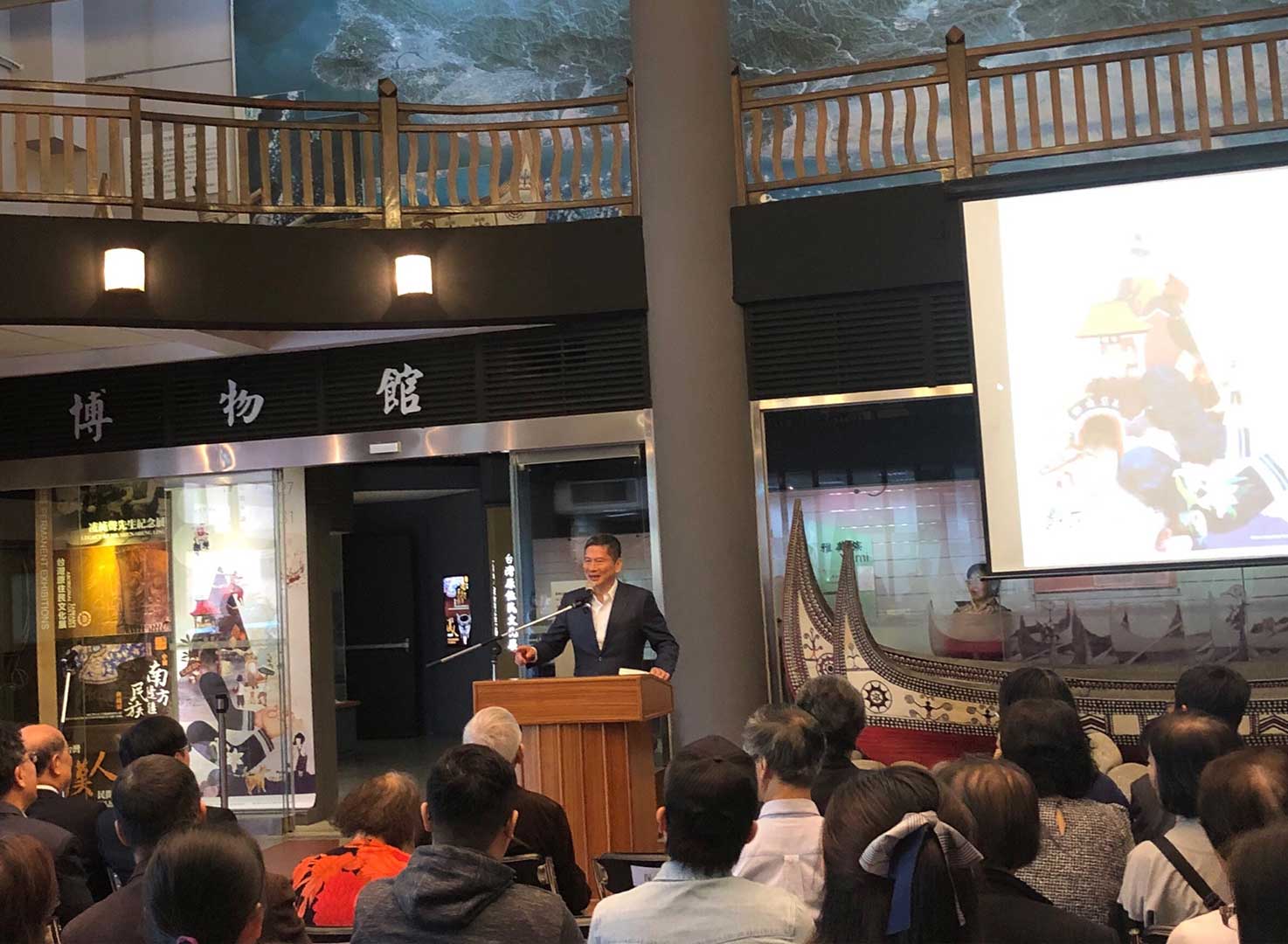
There are more than 60 million Hakkas in the world, but the Hakka customs are different from place to place. The Hakka languages they are using may be not totally communicable. There are more than five different Hakka dialects in Taiwan. Of course, their religious beliefs are also different. Most people know that the Hakka people worship the Yiminye and the Lords of the Three Mountains. But many people may not know that the word "Hakka" was closely related to Christianity and they also may not know much that the Basel Mission and the Taiping Heavenly Kingdom were related., The movement “Return our mother language Hakka” happened 30 years ago has made Hakka's "hiddenness" gradually be "seen", and everyone has respected multiculturalism more. Although the proportion of global Hakka Christians is still not high, it also breeds a diverse Hakka culture.
The special exhibition "The Hakka Culture That You May Not Know” can let everyone see the diversity of Hakka culture intertwined in the “Encounter between Hakkas and Christianity”. This special exhibition enables everyone to see some different things about Hakkas and also demonstrates Christianity's efforts in the development of Hakka culture.
